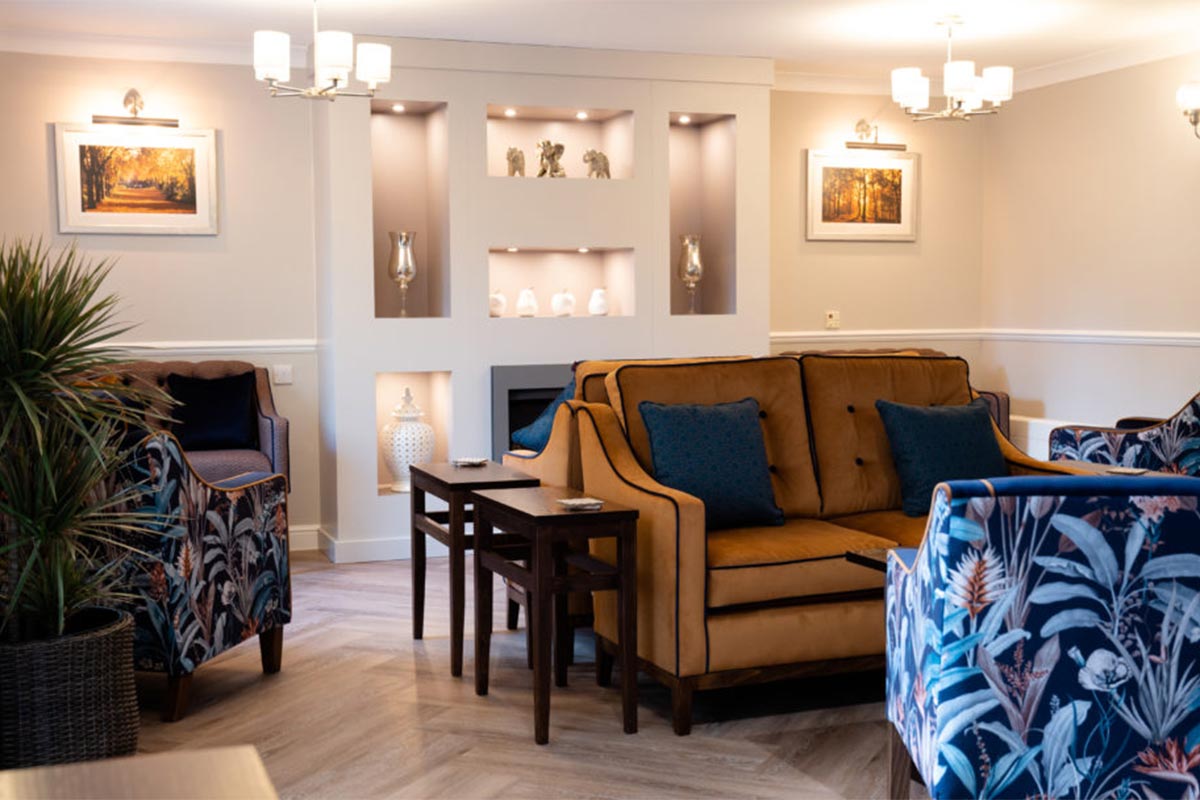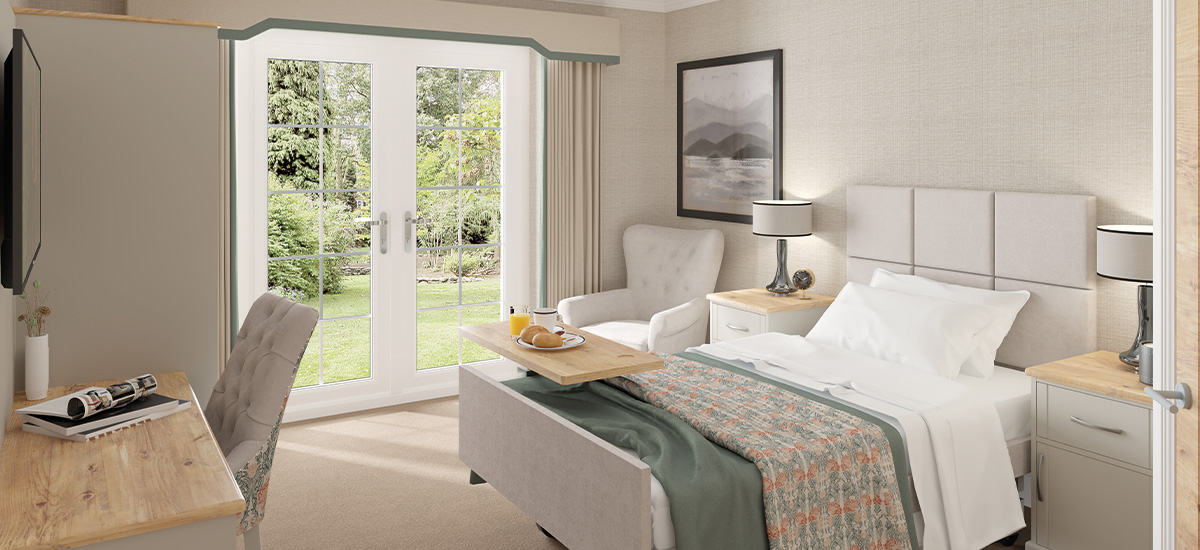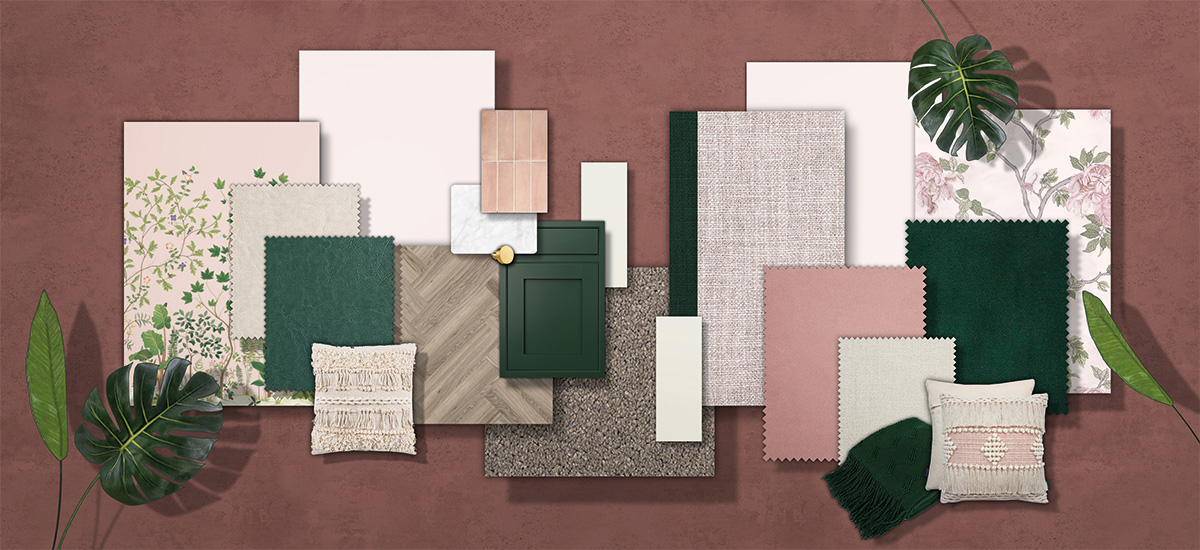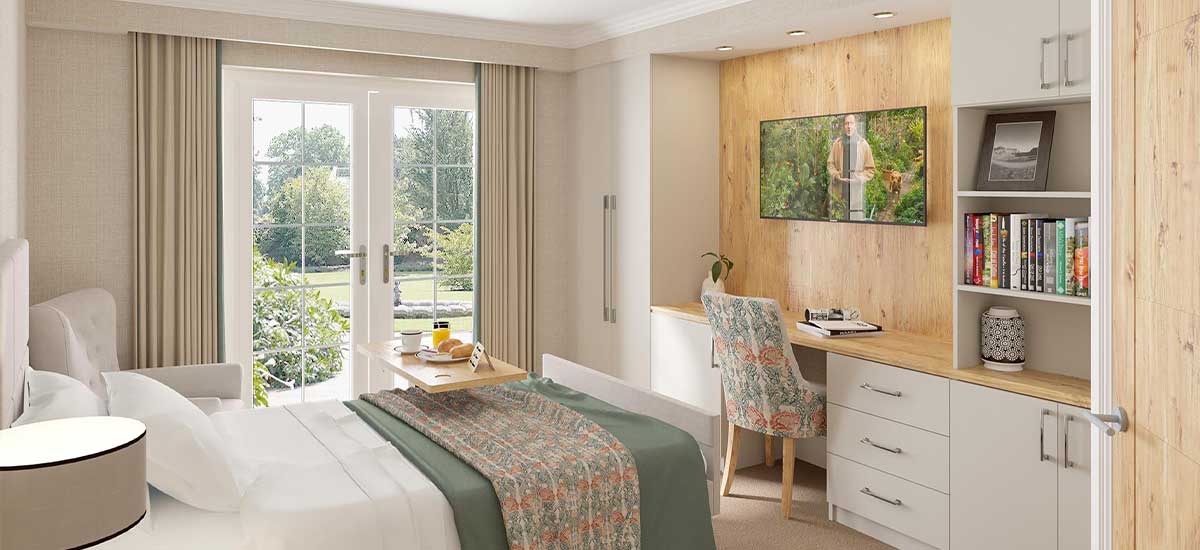We use cookies to make your experience better. To comply with the new e-Privacy directive, we need to ask for your consent to set the cookies. Learn more.
Inside the Palette Part 2: Dementia Design Through the Eyes of Our Interior Designer

In Part 1 of our Inside the Palette series we explored the nuanced use of colour, contrast and the delicate balance between aesthetics and functionality. Today in part 2 we take a look at how navigating spaces becomes a profound challenge for residents with dementia, prompting Hollie to unveil the significance of clear signage, purposeful accessories, and individualised designs, ensuring each space tells a unique story of comfort and well-being.
Navigating Spaces: Signage and Beyond
"Residents with dementia face unique challenges," Hollie begins, citing memory loss, impaired spatial perception, difficulties in processing information and changes in visual and perceptual abilities as some examples. Therefore, it is essential to design environments that provide clear wayfinding cues and minimise potential sources of confusion. Clear and inclusive signage plays a key role here. "Having words and symbols together on signs can be really good," Hollie suggests, catering to residents with different cognitive abilities.
Artwork is another complex factor of dementia design and can play a pivotal role in residents' day-to-day navigation, guiding them around spaces in a home and evoking familiarity. Bear in mind that strategic placement of artwork is equally as important as the artwork choice itself. "It's good to use artwork that can encourage people into a certain area, such as having artwork that has food themes in and near the dining room to encourage people in and remind residents with dementia of the purpose of the room," Hollie points out.
Accessories can often flow into artwork, through having sensory pieces in high-traffic areas such as corridors which are physically interactive for residents passing through. Making accessories purposeful is key to preventing visual clutter while promoting resident engagement. This can be relevant to a room, such as on a terrace or in a garden having clumps of gardening images and potting tables with items on them to, once again, give residents a sense of where they are in the care home. Items can be strategically placed to avoid residents pacing up and down hallways. "Accessories on dementia floors are different in that their purpose is not to be decorative but to stimulate residents by evoking memories and feelings of nostalgia. Creating everyday activities can be good to make people feel like they have a purpose and have something to do that is muscle memory for them." Hollie says. She points out that this can be as simple as having a broom out for residents who may have had a previous job as a cleaner, or having a box of screws in a corridor to re-arrange for residents who used to be builders.
Conclusion
"My personal emphasis when creating dementia-suited design schemes is on tailoring design to individual preferences and needs, and adapting the design choices to what the home requires," Hollie says, and recognises that it's important to strike a balance between decorative elements and functional items. "Here at Edison & Day we really value designing for dementia and it is a very rewarding experience to be able to use our design skills whilst also making spaces fit for the people who need them."




